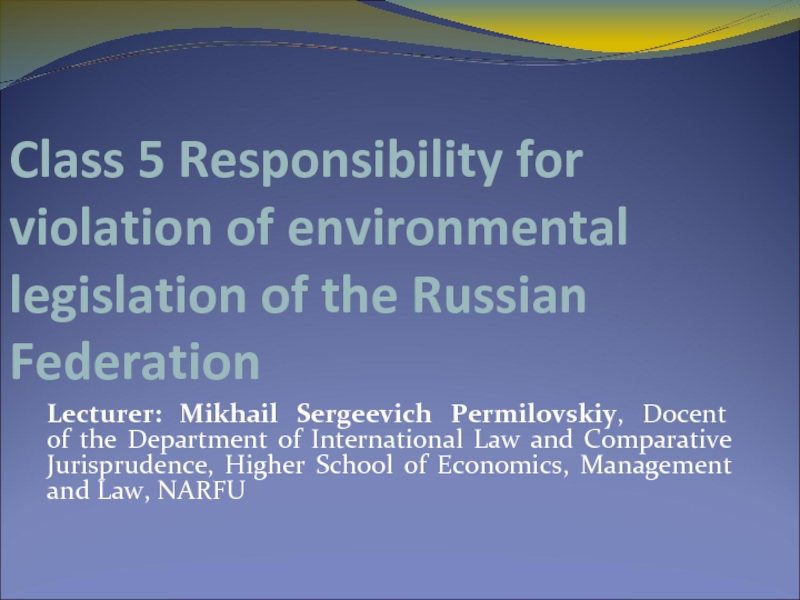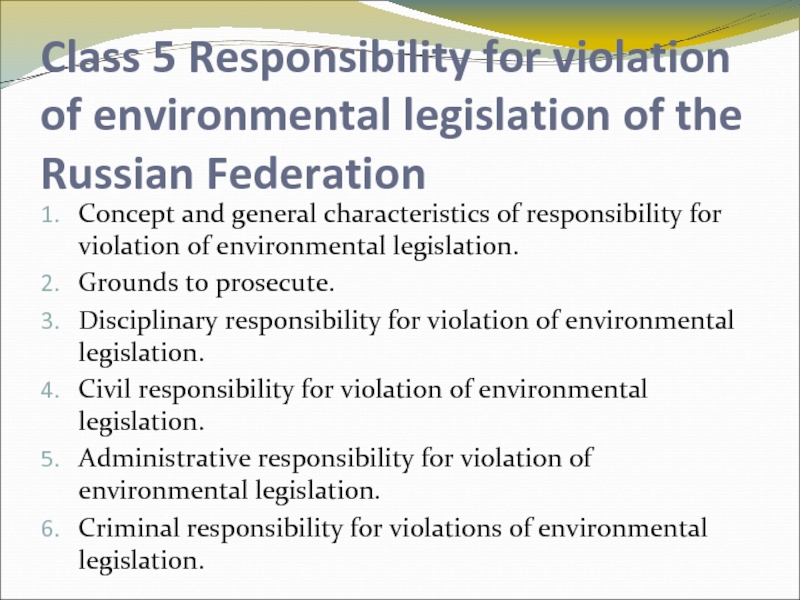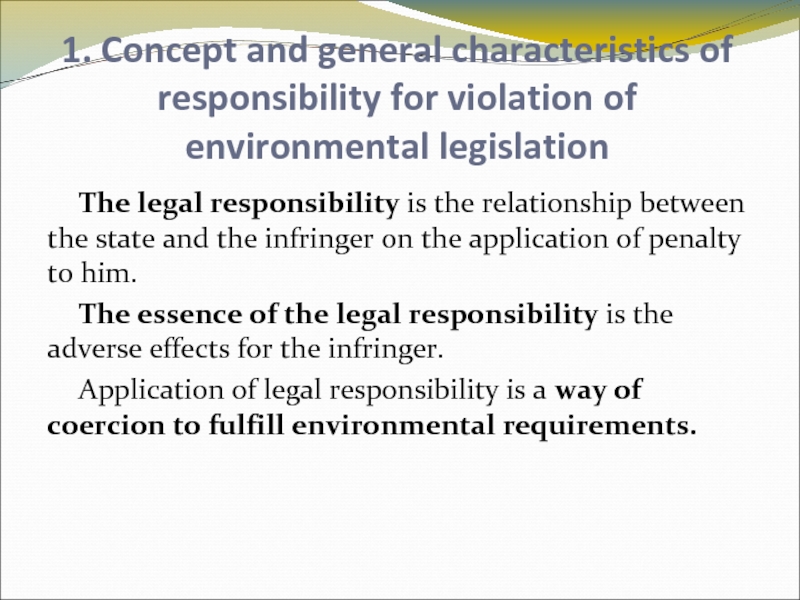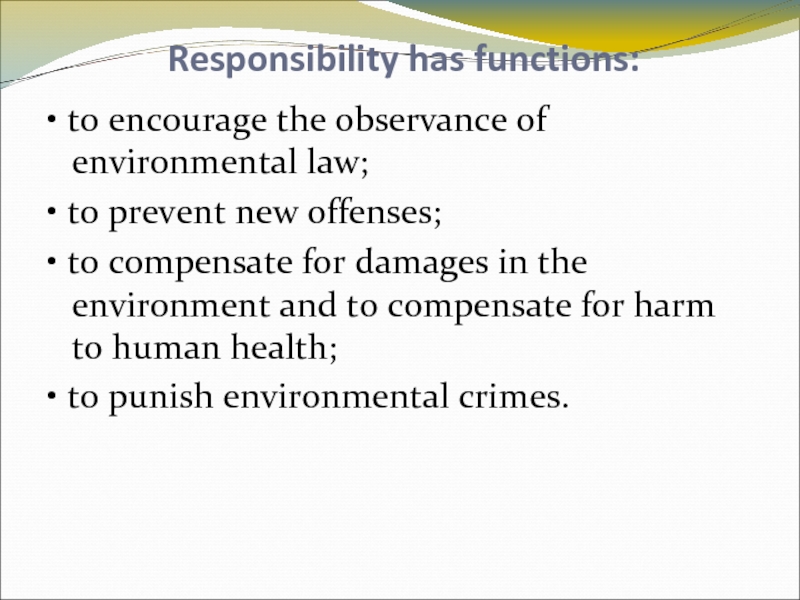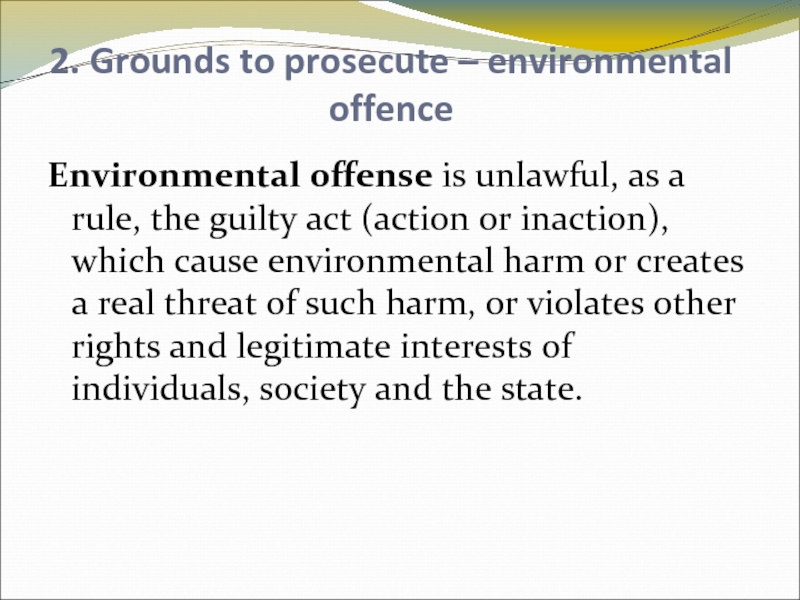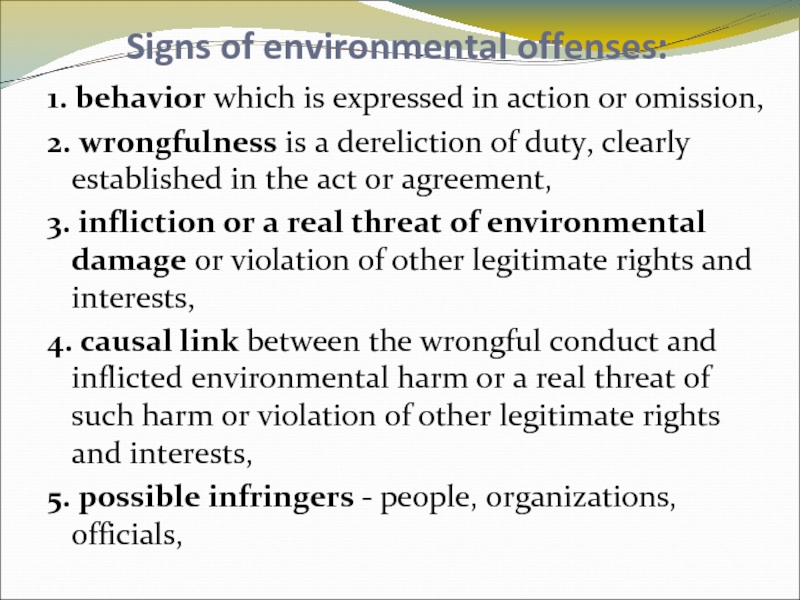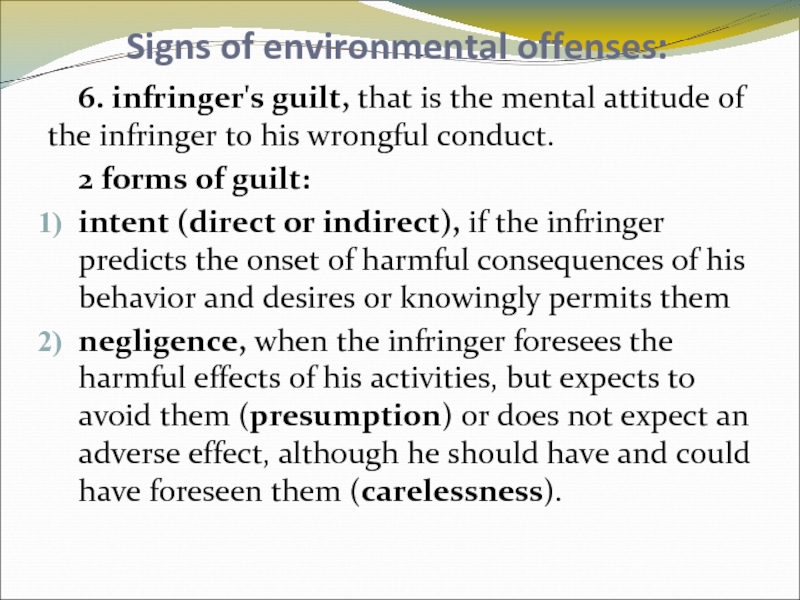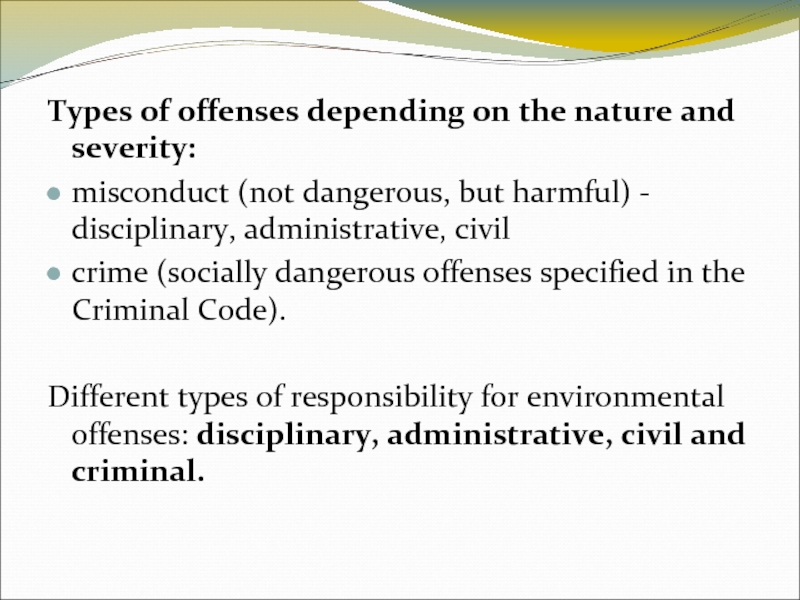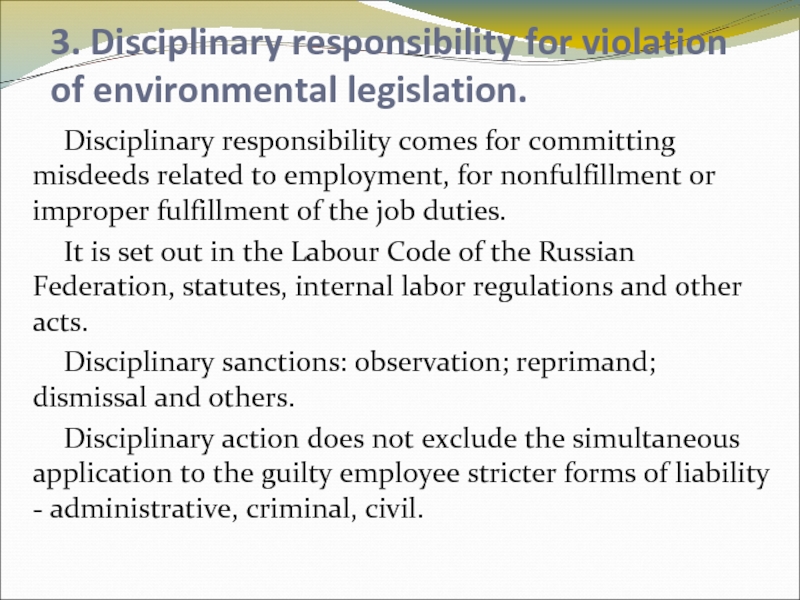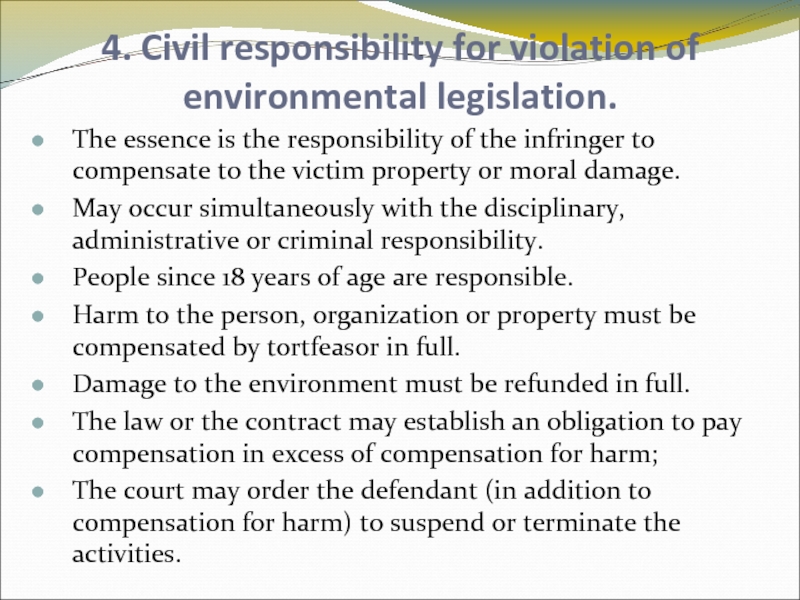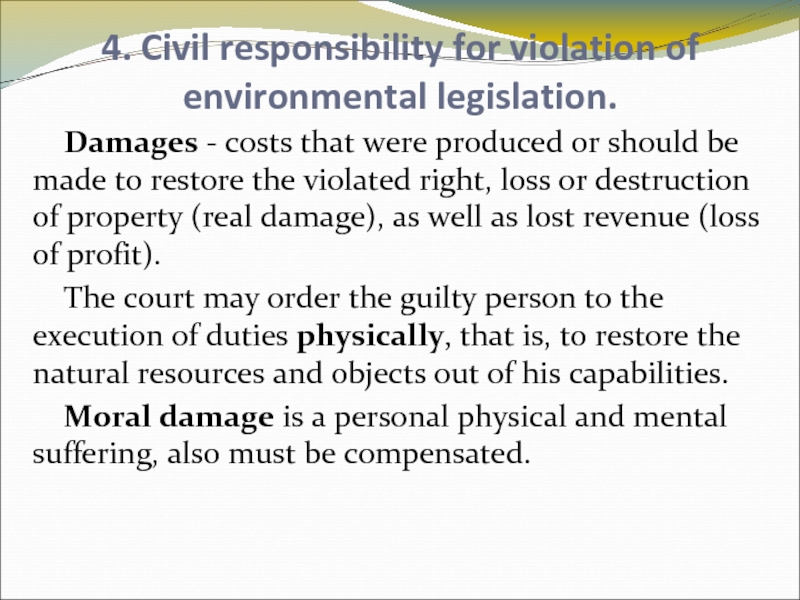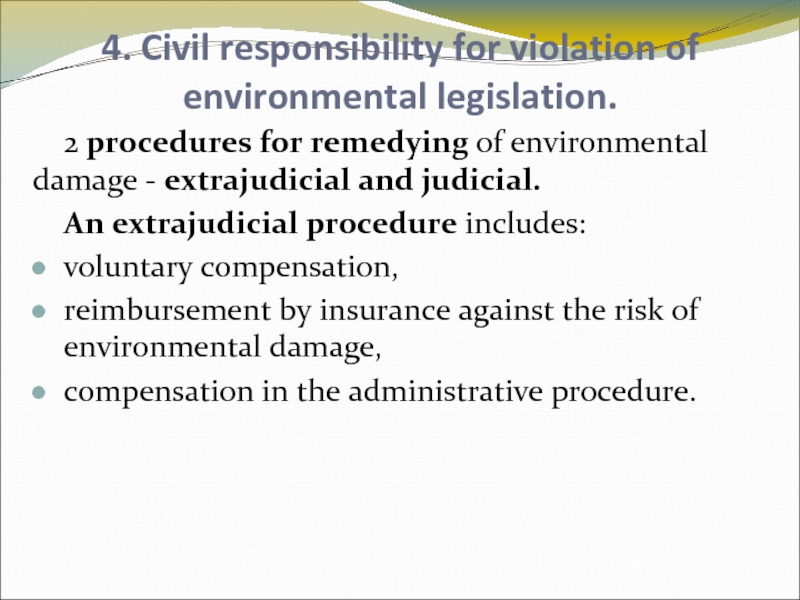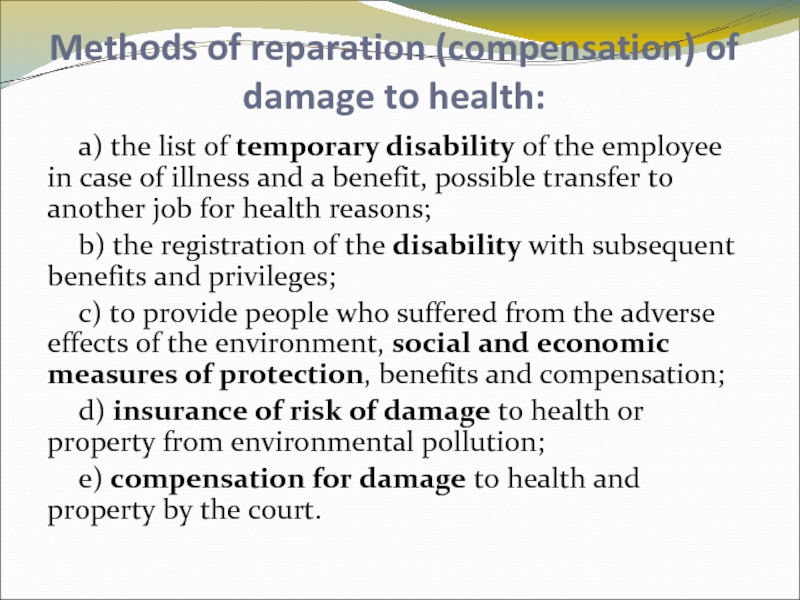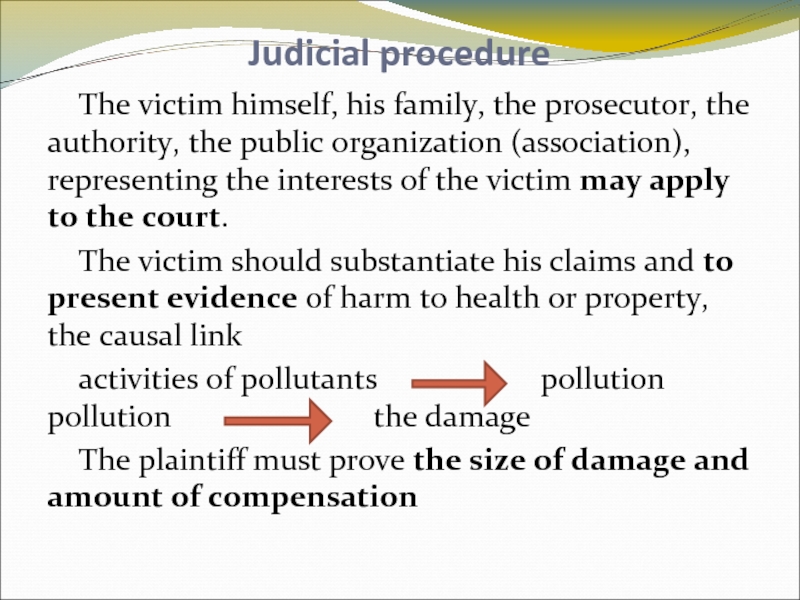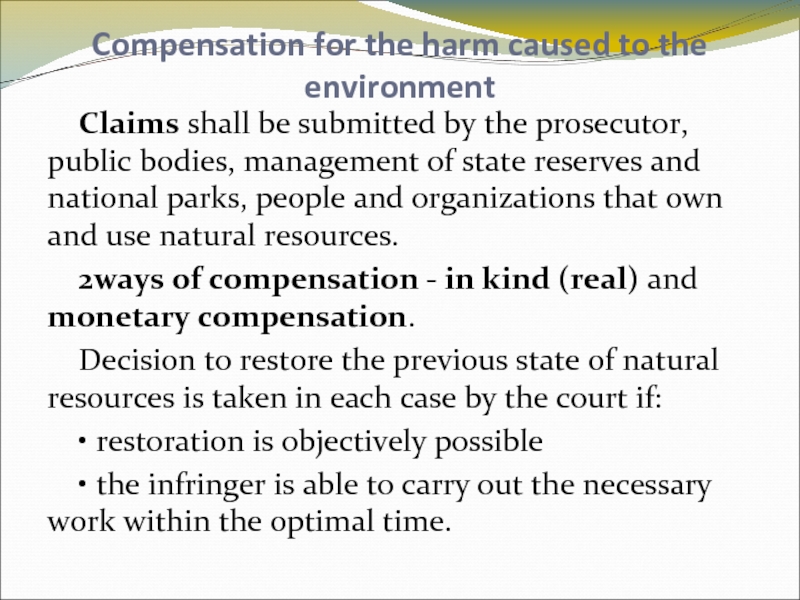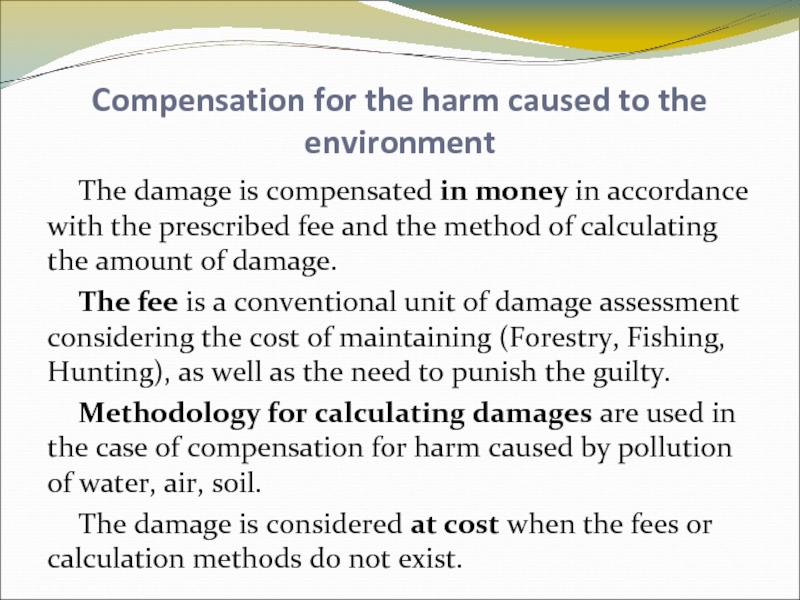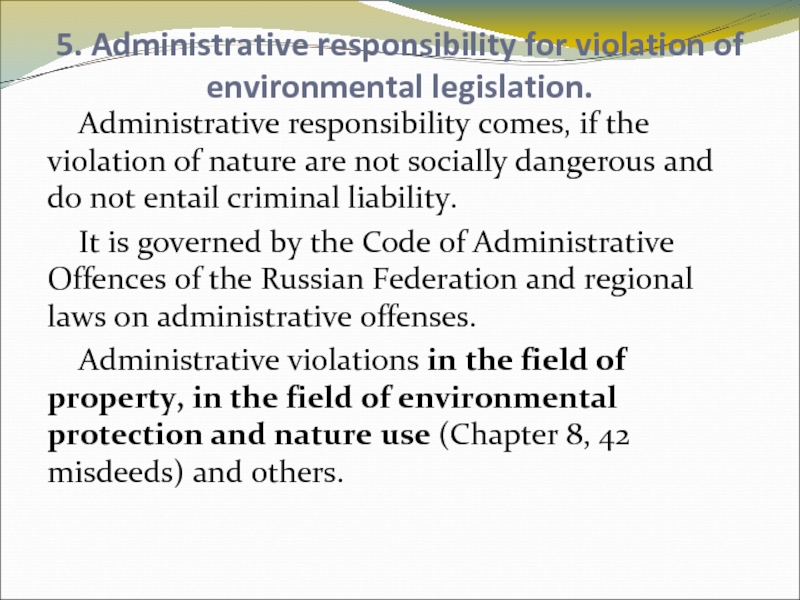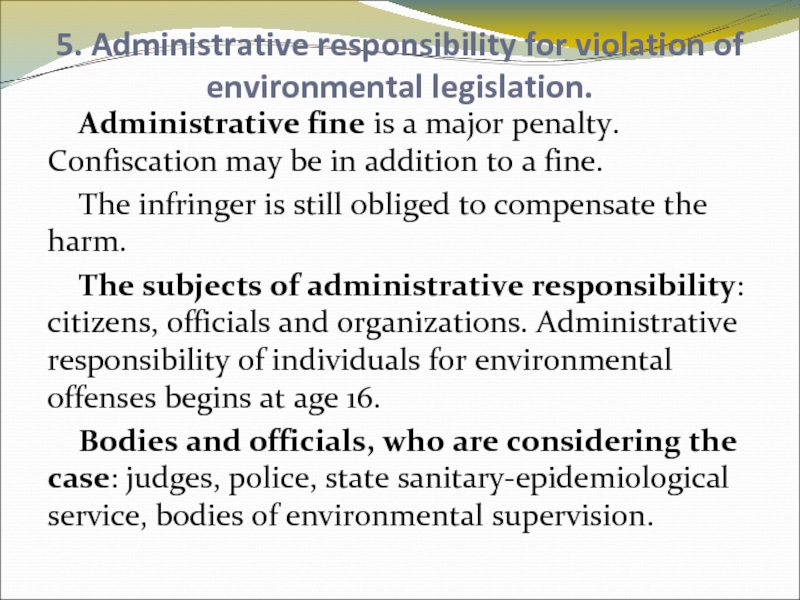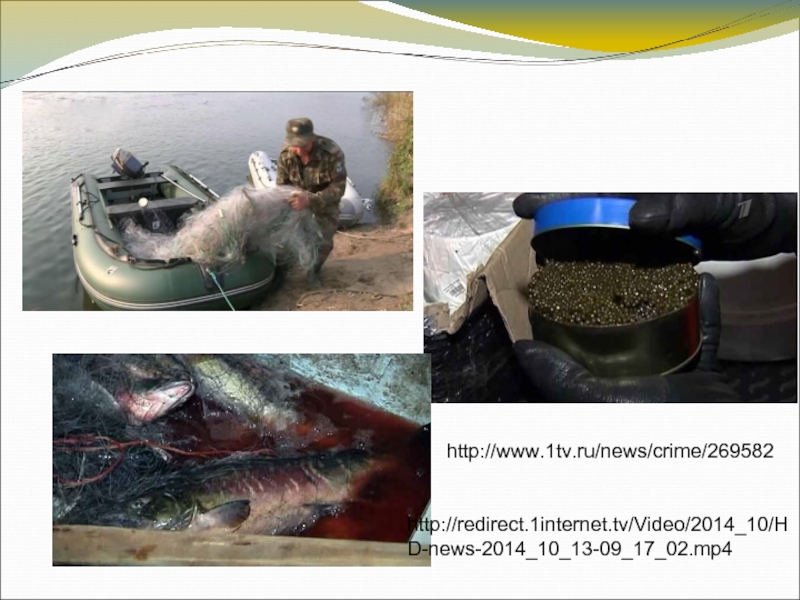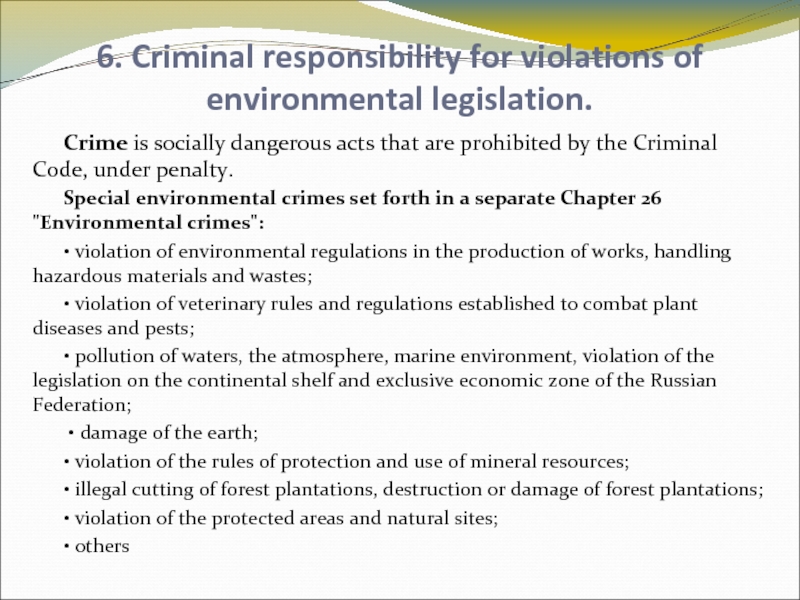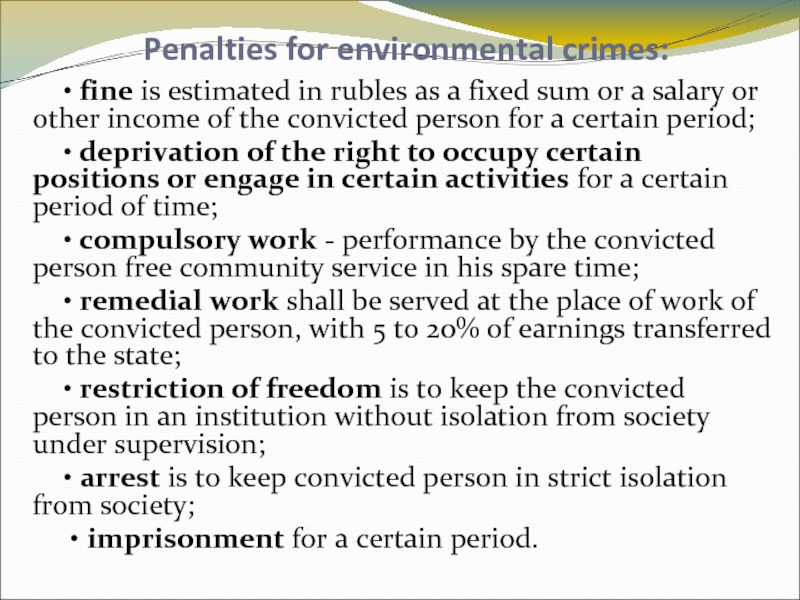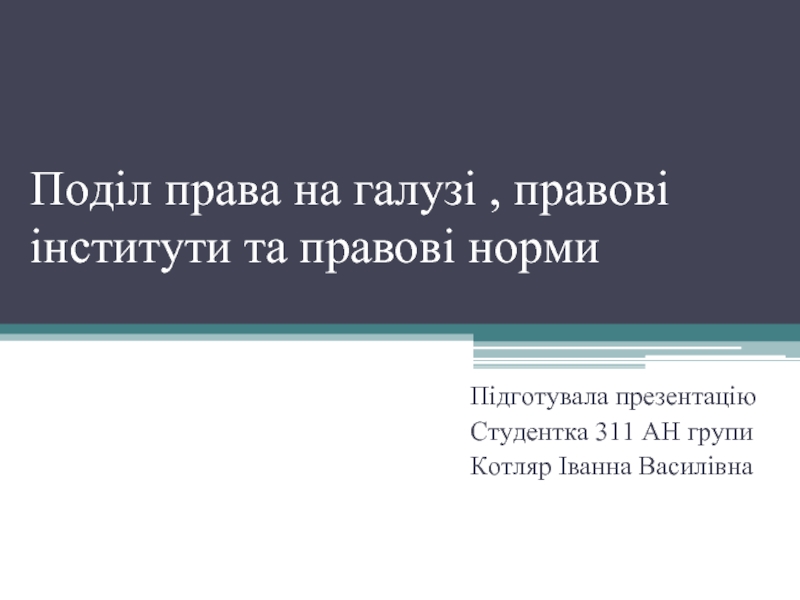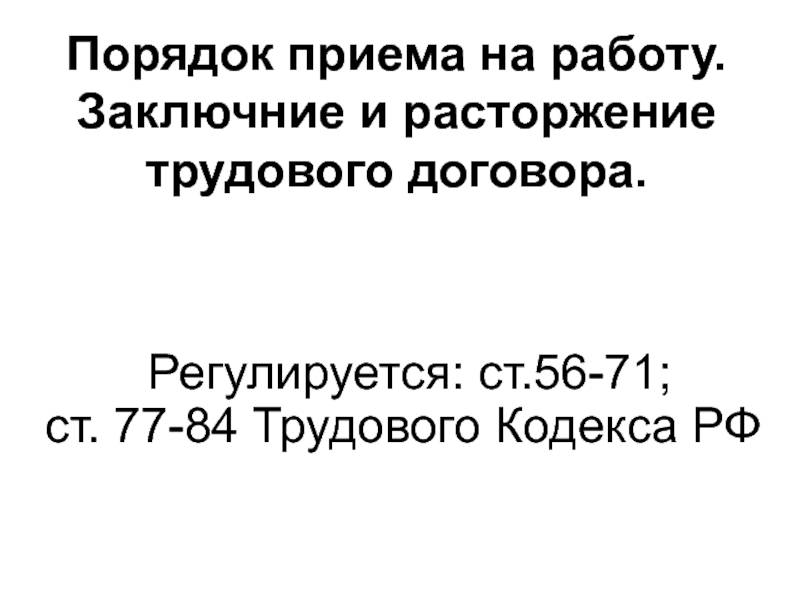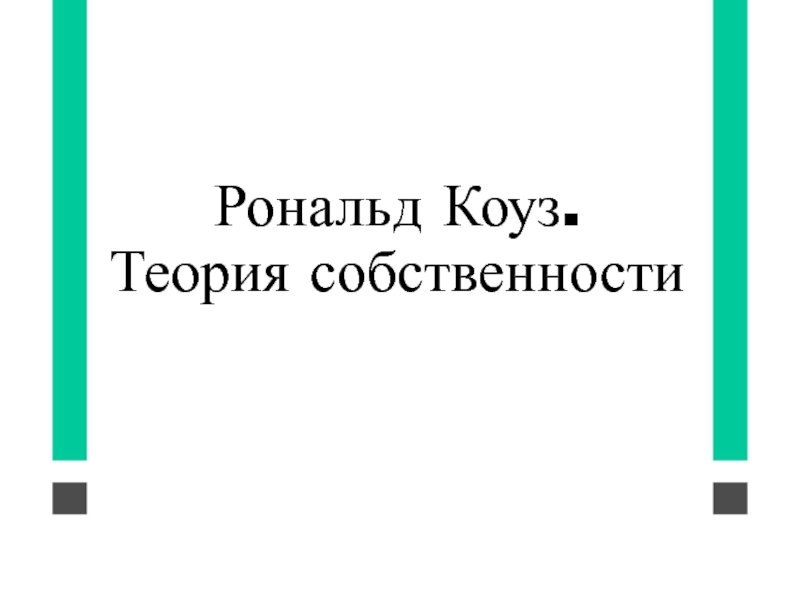Lecturer: Mikhail Sergeevich Permilovskiy, Docent
of the Department of International Law and Comparative Jurisprudence, Higher School of Economics, Management and Law, NARFU
- Главная
- Разное
- Дизайн
- Бизнес и предпринимательство
- Аналитика
- Образование
- Развлечения
- Красота и здоровье
- Финансы
- Государство
- Путешествия
- Спорт
- Недвижимость
- Армия
- Графика
- Культурология
- Еда и кулинария
- Лингвистика
- Английский язык
- Астрономия
- Алгебра
- Биология
- География
- Детские презентации
- Информатика
- История
- Литература
- Маркетинг
- Математика
- Медицина
- Менеджмент
- Музыка
- МХК
- Немецкий язык
- ОБЖ
- Обществознание
- Окружающий мир
- Педагогика
- Русский язык
- Технология
- Физика
- Философия
- Химия
- Шаблоны, картинки для презентаций
- Экология
- Экономика
- Юриспруденция
Responsibility for violation of environmental legislation of the Russian Federation презентация
Содержание
- 1. Responsibility for violation of environmental legislation of the Russian Federation
- 2. Class 5 Responsibility for violation of environmental
- 3. 1. Concept and general characteristics of responsibility
- 4. Responsibility has functions: • to encourage the
- 5. 2. Grounds to prosecute – environmental offence
- 6. Signs of environmental offenses: 1. behavior which
- 7. Signs of environmental offenses: 6. infringer's guilt,
- 8. Types of offenses depending on the
- 9. 3. Disciplinary responsibility for violation of environmental
- 10. 4. Civil responsibility for violation of environmental
- 11. 4. Civil responsibility for violation of environmental
- 12. 4. Civil responsibility for violation of environmental
- 13. Methods of reparation (compensation) of damage to
- 14. Judicial procedure The victim himself, his family,
- 15. Compensation for the harm caused to the
- 16. Compensation for the harm caused to the
- 17. 5. Administrative responsibility for violation of environmental
- 18. Night raids against poachers are held in Primorye.
- 19. 5. Administrative responsibility for violation of environmental
- 20. http://www.1tv.ru/news/crime/269582 http://redirect.1internet.tv/Video/2014_10/HD-news-2014_10_13-09_17_02.mp4
- 21. 6. Criminal responsibility for violations of environmental
- 22. Penalties for environmental crimes: • fine is
- 23. Thank you for your attention
Слайд 1Class 5 Responsibility for violation of environmental legislation of the Russian
Слайд 2Class 5 Responsibility for violation of environmental legislation of the Russian
Concept and general characteristics of responsibility for violation of environmental legislation.
Grounds to prosecute.
Disciplinary responsibility for violation of environmental legislation.
Civil responsibility for violation of environmental legislation.
Administrative responsibility for violation of environmental legislation.
Criminal responsibility for violations of environmental legislation.
Слайд 31. Concept and general characteristics of responsibility for violation of environmental
The legal responsibility is the relationship between the state and the infringer on the application of penalty to him.
The essence of the legal responsibility is the adverse effects for the infringer.
Application of legal responsibility is a way of coercion to fulfill environmental requirements.
Слайд 4Responsibility has functions:
• to encourage the observance of environmental law;
• to
• to compensate for damages in the environment and to compensate for harm to human health;
• to punish environmental crimes.
Слайд 52. Grounds to prosecute – environmental offence
Environmental offense is unlawful, as
Слайд 6Signs of environmental offenses:
1. behavior which is expressed in action or
2. wrongfulness is a dereliction of duty, clearly established in the act or agreement,
3. infliction or a real threat of environmental damage or violation of other legitimate rights and interests,
4. causal link between the wrongful conduct and inflicted environmental harm or a real threat of such harm or violation of other legitimate rights and interests,
5. possible infringers - people, organizations, officials,
Слайд 7Signs of environmental offenses:
6. infringer's guilt, that is the mental attitude
2 forms of guilt:
intent (direct or indirect), if the infringer predicts the onset of harmful consequences of his behavior and desires or knowingly permits them
negligence, when the infringer foresees the harmful effects of his activities, but expects to avoid them (presumption) or does not expect an adverse effect, although he should have and could have foreseen them (carelessness).
Слайд 8
Types of offenses depending on the nature and severity:
misconduct (not dangerous,
crime (socially dangerous offenses specified in the Criminal Code).
Different types of responsibility for environmental offenses: disciplinary, administrative, civil and criminal.
Слайд 93. Disciplinary responsibility for violation of environmental legislation.
Disciplinary responsibility comes for
It is set out in the Labour Code of the Russian Federation, statutes, internal labor regulations and other acts.
Disciplinary sanctions: observation; reprimand; dismissal and others.
Disciplinary action does not exclude the simultaneous application to the guilty employee stricter forms of liability - administrative, criminal, civil.
Слайд 104. Civil responsibility for violation of environmental legislation.
The essence is the
May occur simultaneously with the disciplinary, administrative or criminal responsibility.
People since 18 years of age are responsible.
Harm to the person, organization or property must be compensated by tortfeasor in full.
Damage to the environment must be refunded in full.
The law or the contract may establish an obligation to pay compensation in excess of compensation for harm;
The court may order the defendant (in addition to compensation for harm) to suspend or terminate the activities.
Слайд 114. Civil responsibility for violation of environmental legislation.
Damages - costs that
The court may order the guilty person to the execution of duties physically, that is, to restore the natural resources and objects out of his capabilities.
Moral damage is a personal physical and mental suffering, also must be compensated.
Слайд 124. Civil responsibility for violation of environmental legislation.
2 procedures for remedying
An extrajudicial procedure includes:
voluntary compensation,
reimbursement by insurance against the risk of environmental damage,
compensation in the administrative procedure.
Слайд 13Methods of reparation (compensation) of damage to health:
a) the list of
b) the registration of the disability with subsequent benefits and privileges;
c) to provide people who suffered from the adverse effects of the environment, social and economic measures of protection, benefits and compensation;
d) insurance of risk of damage to health or property from environmental pollution;
e) compensation for damage to health and property by the court.
Слайд 14Judicial procedure
The victim himself, his family, the prosecutor, the authority, the
The victim should substantiate his claims and to present evidence of harm to health or property, the causal link
activities of pollutants pollution pollution the damage
The plaintiff must prove the size of damage and amount of compensation
Слайд 15Compensation for the harm caused to the environment
Claims shall be submitted
2ways of compensation - in kind (real) and monetary compensation.
Decision to restore the previous state of natural resources is taken in each case by the court if:
• restoration is objectively possible
• the infringer is able to carry out the necessary work within the optimal time.
Слайд 16Compensation for the harm caused to the environment
The damage is compensated
The fee is a conventional unit of damage assessment considering the cost of maintaining (Forestry, Fishing, Hunting), as well as the need to punish the guilty.
Methodology for calculating damages are used in the case of compensation for harm caused by pollution of water, air, soil.
The damage is considered at cost when the fees or calculation methods do not exist.
Слайд 175. Administrative responsibility for violation of environmental legislation.
Administrative responsibility comes, if
It is governed by the Code of Administrative Offences of the Russian Federation and regional laws on administrative offenses.
Administrative violations in the field of property, in the field of environmental protection and nature use (Chapter 8, 42 misdeeds) and others.
Слайд 195. Administrative responsibility for violation of environmental legislation.
Administrative fine is a
The infringer is still obliged to compensate the harm.
The subjects of administrative responsibility: citizens, officials and organizations. Administrative responsibility of individuals for environmental offenses begins at age 16.
Bodies and officials, who are considering the case: judges, police, state sanitary-epidemiological service, bodies of environmental supervision.
Слайд 20
http://www.1tv.ru/news/crime/269582
http://redirect.1internet.tv/Video/2014_10/HD-news-2014_10_13-09_17_02.mp4
Слайд 216. Criminal responsibility for violations of environmental legislation.
Crime is socially dangerous
Special environmental crimes set forth in a separate Chapter 26 "Environmental crimes":
• violation of environmental regulations in the production of works, handling hazardous materials and wastes;
• violation of veterinary rules and regulations established to combat plant diseases and pests;
• pollution of waters, the atmosphere, marine environment, violation of the legislation on the continental shelf and exclusive economic zone of the Russian Federation;
• damage of the earth;
• violation of the rules of protection and use of mineral resources;
• illegal cutting of forest plantations, destruction or damage of forest plantations;
• violation of the protected areas and natural sites;
• others
Слайд 22Penalties for environmental crimes:
• fine is estimated in rubles as a
• deprivation of the right to occupy certain positions or engage in certain activities for a certain period of time;
• compulsory work - performance by the convicted person free community service in his spare time;
• remedial work shall be served at the place of work of the convicted person, with 5 to 20% of earnings transferred to the state;
• restriction of freedom is to keep the convicted person in an institution without isolation from society under supervision;
• arrest is to keep convicted person in strict isolation from society;
• imprisonment for a certain period.
